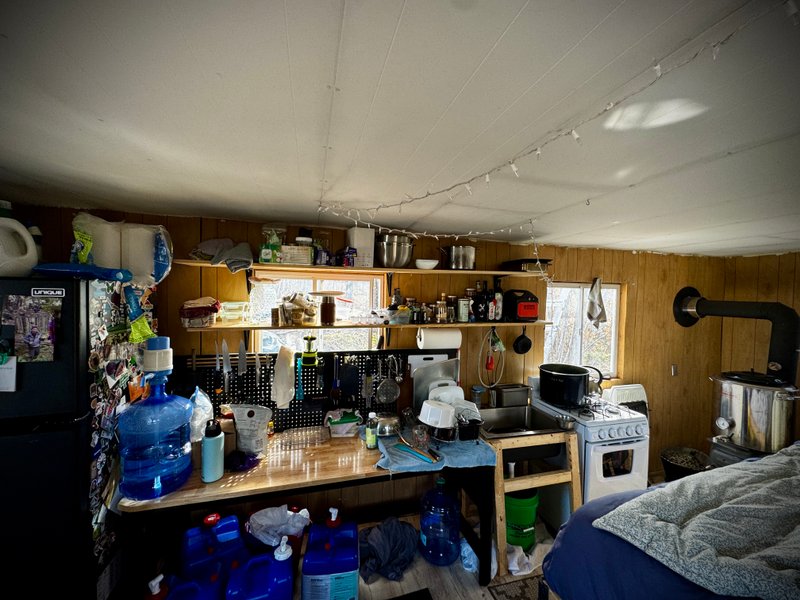Relocating and Upgrading Our Off-Grid Cabin

Moving the Cabin: A Big Step Toward Winter Comfort
This fall, we took on a big project—moving our 10’x20’ off-grid cabin to a better location. It was originally dropped on one side of our gravel pad, but we needed to rotate it 180° and place it where our camper used to be. The move wasn’t easy. Our Kubota L3560 tractor struggled to pull the cabin on its skids, barely managing the weight. We needed a different approach, so we grabbed some smaller logs and used them as rollers. That trick made all the difference, and we were able to shift the cabin into its new position with a lot less effort. It was a slow process, but seeing it finally settle into place was incredibly satisfying.
Why We Moved It
Last winter showed us the flaws in our setup. The camper had been our primary living space for a long time, but it wasn’t built for Michigan winters. The p-traps kept freezing, and since the heater in the camper never worked, we relied on a small Winterwell camp stove—the kind meant for a canvas tent. It worked, but it burned through wood fast, and heating water over it was slow and the propane stove in the camper took hours to get water hot enough for showers, too. The constant back-and-forth between the cabin and the camper, especially in bad weather, became a real pain. By moving the cabin to the camper’s old spot, we eliminated that problem and finally had everything in one place.
Making the Cabin a True Home
Once the cabin was in its new location, we focused on making it more functional. One of the biggest upgrades was the kitchen. We installed a 72-inch workbench as a kitchen counter and added a sink with a custom-built frame. The propane cook stove we put in is way hotter and more efficient than the tiny one in the camper. Now we keep a 20-gallon stockpot on the wood stove, which has made daily life so much easier.
We also added a shower stall in the corner, directly across from the wood stove. That placement was intentional—having the shower near the heat source makes it much more comfortable in the colder months. With that, our cabin finally had a fully functional kitchen and a place to bathe, which was a huge step forward in making it feel like a real home.
Storage was another challenge we tackled. I built a new bedframe to lift our mattress off the floor, giving us space underneath for totes. That extra storage has been a game-changer, keeping things organized and out of the way. The cats also got an upgrade—they lost their old cat tree, but they gained two shelves above the bed, each with a cozy spot to lounge.
Settling In and Looking Ahead
Now that everything is in place, life in the cabin is much smoother. No more freezing pipes, no more running between buildings in bad weather, and no more dealing with a camper that wasn’t built for winter. We’re still planning to add skirting next year, but for now, the setup is working well. It feels good to have everything centralized, and it’s a relief to know we’re better prepared for the colder months.
We captured the move in a time-lapse video, and watching it back is pretty satisfying. It’s amazing how much effort went into getting the cabin just a few dozen feet away, but every inch of that move was worth it. This change has made winter living far more comfortable, and we’re excited to keep improving things as we go.
